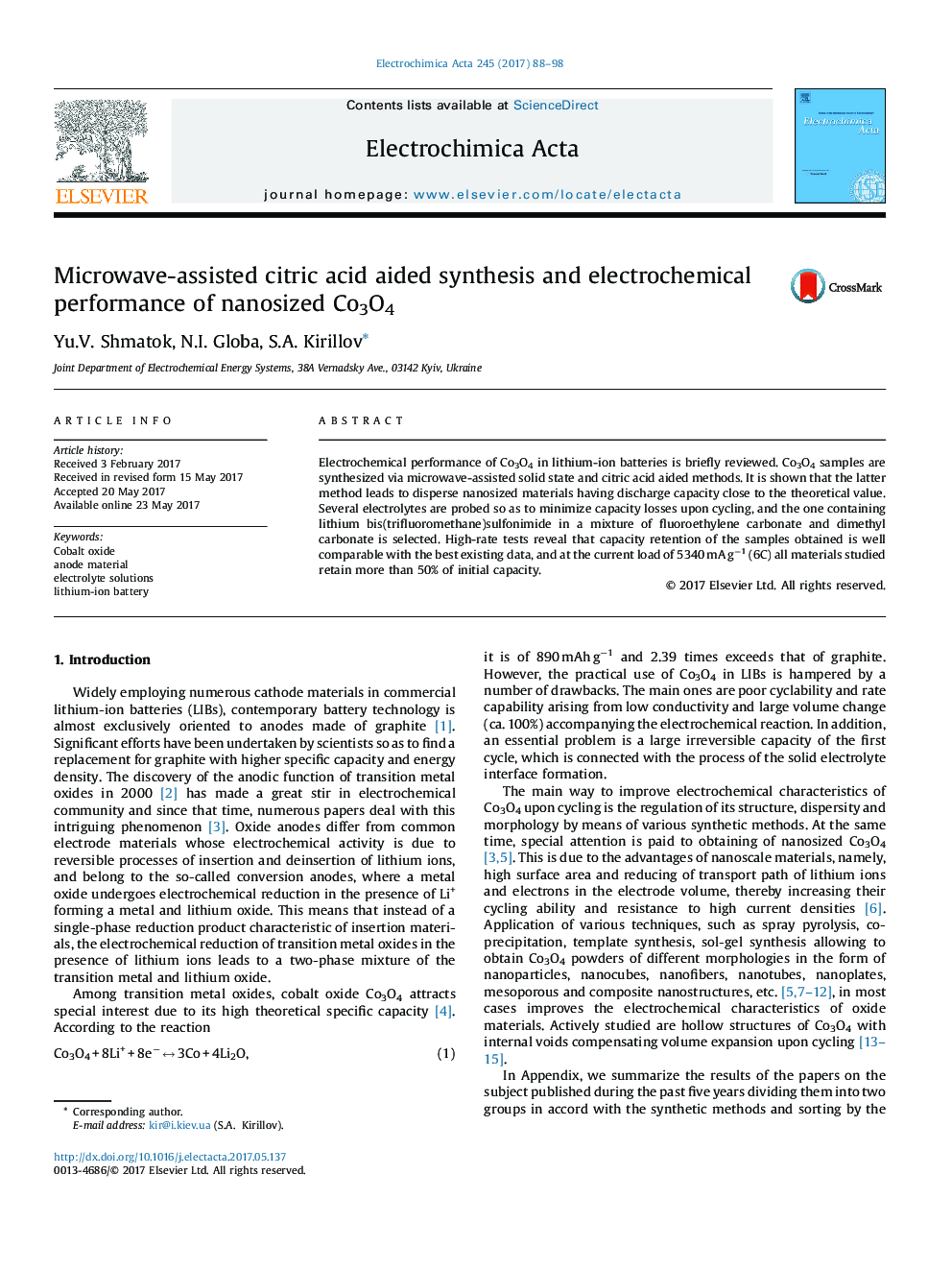| Article ID | Journal | Published Year | Pages | File Type |
|---|---|---|---|---|
| 6470657 | Electrochimica Acta | 2017 | 11 Pages |
â¢Co3O4 samples are synthesized via two microwave-assisted methods.â¢The citric acid aided route appears optimal for obtaining nanosized samples.â¢The nanosized Co3O4 has discharge capacity close to the theoretical value.â¢Electrolytes including EC, FEC and DMC are tested in Li||Co3O4 sample cells.â¢In a FEC-containing electrolyte, capacity losses upon cycling are minimal.
Ðlectrochemical performance of Co3O4 in lithium-ion batteries is briefly reviewed. Co3O4 samples are synthesized via microwave-assisted solid state and citric acid aided methods. It is shown that the latter method leads to disperse nanosized materials having discharge capacity close to the theoretical value. Several electrolytes are probed so as to minimize capacity losses upon cycling, and the one containing lithium bis(trifluoromethane)sulfonimide in a mixture of fluoroethylene carbonate and dimethyl carbonate is selected. High-rate tests reveal that capacity retention of the samples obtained is well comparable with the best existing data, and at the current load of 5340Â mAÂ gâ1 (6C) all materials studied retain more than 50% of initial capacity.
Graphical AbstractDownload high-res image (292KB)Download full-size image
